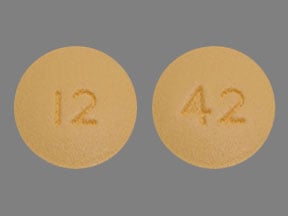
Sitagliptin Coupons & Savings Card – Discount Prices from $103.80
Generic for: Zituvio
My prescription
Edit
100MG, Sitagliptin (30 Tablets)
Select pharmacy

CVS
$103.80
COUPON PRICE
Walgreens
$118.78
COUPON PRICE
Walmart
$275.63
COUPON PRICE
Albertsons
$295.60
COUPON PRICESitagliptin savings card
Show this card to your pharmacist
CVS
$103.80
BIN
ID
PCN
GRP
019876
LH0D88FCFA
CHIPPO
LHX
Powered by
More prescriptions for diabetes type 2
More prescriptions for diabetes type 2
Price history for Zituvio (brand) & Sitagliptin (generic)
30 Tablets, 100MG
Average retail price for Zituvio
Average retail price for Sitagliptin
Average SaveHealth price for Sitagliptin
Our price history data is based on aggregated prescription data collected from participating pharmacies in America. Our prescription data updates daily to reflect the latest price changes. If you notice a missing data point, it means there wasn't sufficient data available to generate a monetary value for that date.
We analyzed Sitagliptin prices for (100MG, 30 Tablets) over the last 12 months. The average retail price was $861.71, while the average price using the SaveHealth discount card was $302.00. That's a savings of approximately 64.95% when using our Sitagliptin coupon.
Compared to the generic version, Zituvio had an average price of $376.59 over the same time period. With the SaveHealth savings card, Sitagliptin is 19.81% cheaper on average than Zituvio.
*Retail prices are based on pharmacy claims data, and may not be accurate when we don't have enough claims.
Sitagliptin dosage forms
Dosage Quantity Price from Per unit 25MG 30 Tablets $103.80 $3.46 25MG 90 Tablets $283.40 $3.15 50MG 30 Tablets $103.80 $3.46 50MG 90 Tablets $283.40 $3.15 100MG 30 Tablets $103.80 $3.46 100MG 90 Tablets $283.40 $3.15
| Dosage | Quantity | Price from | Per unit |
|---|---|---|---|
| 25MG | 30 Tablets | $103.80 | $3.46 |
| 25MG | 90 Tablets | $283.40 | $3.15 |
| 50MG | 30 Tablets | $103.80 | $3.46 |
| 50MG | 90 Tablets | $283.40 | $3.15 |
| 100MG | 30 Tablets | $103.80 | $3.46 |
| 100MG | 90 Tablets | $283.40 | $3.15 |
Sitagliptin Warnings
The information below outlines crucial safety considerations for those using Januvia (sitagliptin). It is important to review these points and discuss any concerns with your healthcare provider.
Pancreas Issues: Although rare, some individuals have experienced pancreatitis while taking Januvia. It's unclear if the medication was the cause. If you notice symptoms such as upper stomach pain, fever, nausea, or vomiting, discontinue use and contact your healthcare provider immediately.
Heart Failure Risk: While it's not confirmed that Januvia increases the risk of heart failure, similar medications have been associated with this issue. Inform your provider if you have existing heart or kidney conditions. Seek medical assistance if you experience symptoms like difficulty breathing, fatigue, swelling, or sudden weight gain.
Sudden Kidney Problems: There have been rare reports of acute kidney injury in patients taking Januvia, sometimes requiring dialysis. Regular blood tests may be necessary to monitor kidney function, especially if you have pre-existing kidney conditions. Notify your provider if you observe signs like reduced urination.
Serious Allergic Reactions: Rarely, Januvia may cause severe allergic reactions, including skin rash, swelling, or breathing difficulties. This is more common within the first three months of treatment. If you have previously reacted to other DPP-4 inhibitors, inform your provider. In case of an allergic reaction, cease the medication and seek medical attention immediately.
Joint Pain: Some patients on Januvia experience severe joint pain, which can occur at any time during treatment. Most cases resolve after stopping the medication. Report any joint discomfort to your healthcare provider without delay.
Severe Skin Reactions: A small number of users have developed an itchy, blistering rash known as bullous pemphigoid. These symptoms typically resolve after discontinuing the drug. If you develop itchy skin, blisters, or sores, contact your provider promptly and stop taking Januvia.
No specific contraindications have been identified for Januvia at this time. Always consult your healthcare provider for personalized advice and guidance.
Sitagliptin Side Effects
Common side effects:
- Runny nose
- Sore throat
- Cold-like symptoms
- Headaches
Less common but important to monitor:
- Low blood sugar
- High blood sugar
Serious side effects:
- Pancreatitis
- Severe allergic reactions
- Unexpected kidney problems
Sitagliptin Interactions
When taking Januvia (sitagliptin), it is important to be aware of potential interactions with other medications. Inform your doctor and pharmacist about all the medications and supplements you are currently using, including prescription, over-the-counter, vitamins, and herbal products. Some drugs may not be recommended for use with Januvia, but your doctor may decide that using both is necessary and adjust dosages accordingly. Medications such as Acarbose, Metformin, and various antibiotics like Ciprofloxacin and Levofloxacin might interact with Januvia, potentially affecting its effectiveness or increasing side effects.
Beta-blockers, including drugs like Metoprolol and Timolol, may hide some symptoms of low blood sugar, such as a fast or pounding heartbeat, which is critical for detecting hypoglycemia. However, other signs of low blood sugar, like dizziness, hunger, or sweating, remain unaffected. If you are on beta-blockers and Januvia, your doctor might need to adjust your diabetes treatment plan, including medication, exercise, or diet, to ensure effective blood sugar management. Regular monitoring of your blood sugar and timely communication with your healthcare provider about any high or low blood sugar symptoms are essential for your safety.
